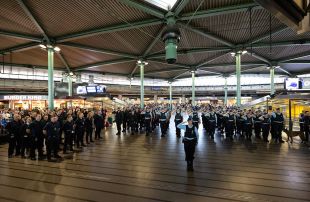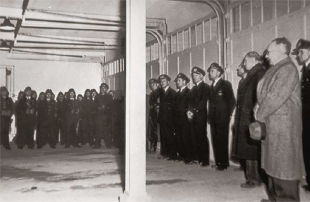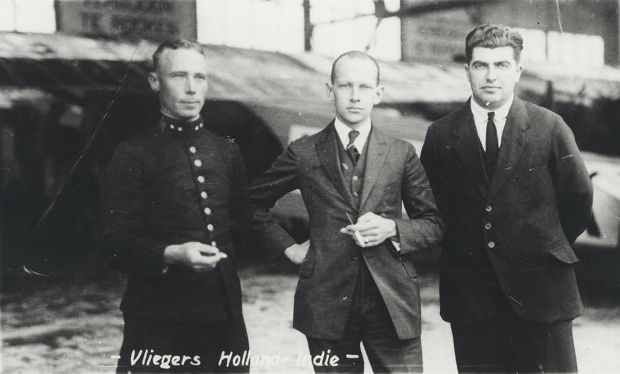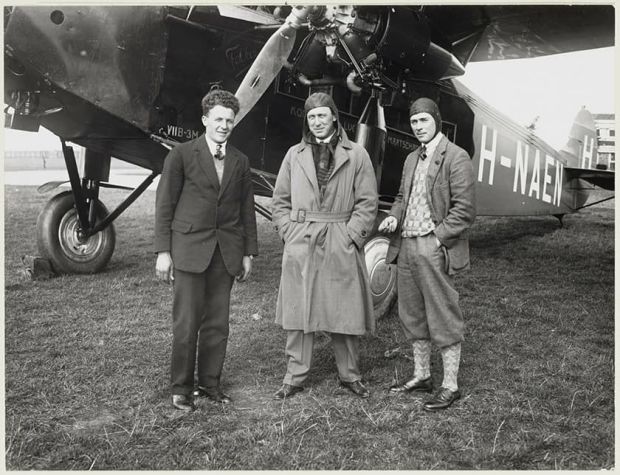What's in a name? All about our street names - 3
Streets, roads and squares: they all need to have names, at Schiphol too. How are you supposed to find your way otherwise? Some are wide avenues, others are a bit hidden behind rows of offices, but they often tell an interesting story. A story we're proud of. Here's part 3 of our series about street names.
Van Weerden Poelman (Street)
Flying from Schiphol to Batavia (now Jakarta) in a plane made primarily out of wood and linen using just a compass and what you can see on the ground as navigation? You have to be really determined (and brave) to want to do that! Fortunately, flight lieutenant Hendrik van Weerden Poelman welcomes this exciting prospect. Together with KLM pilot Jan Thomassen à Thuessink van der Hoop and engineer officer Pieter van den Broeke he was the first to make this unique journey in 1924.
Van Weerden Poelman is certainly no novice. As a young man he voluntarily enlists in the army but is soon fascinated by the emerging military aviation. He requests a transfer, and in 1918 he can officially call himself a pilot. He's got talent and is asked to join a display team, with whom he enjoys international success. Six years later, he gets special leave from the military for the famous Holland-East Indies flight.
Henk Veenendaal (Street)
It is well known that the history of Schiphol is closely intertwined with that of KLM. And Henk Veenendaal is a good example of this relationship. In 1921, he starts working for the airline and soon works his way up to being a mechanic. In this position, he makes the journey to Batavia in 1928 together with pilots Iwan Smirnoff and Izak A. Aler. But that's not all. Veenendaal travels to the United States on behalf of KLM and establishes good connections there.
No one within the company is surprised when he succeeds vice-president Piet Guilonard, who is killed in a plane crash in the late 1930s. It was in large part due to Veenendaal's efforts as a technician and organiser that KLM was able to take off after World War II. Tragically, Veenendaal suffers the same fate as Guilonard and is killed in a plane crash in Prestwick, Scotland in 1948. KLM director Albert Plesman says an emotional farewell to his good friend in a speech at his funeral.
Scrayershoek
The origin of some street names is immediately obvious. In some cases, however, it's more difficult to determine. Fortunately, a Volkskrant article from 14 December 1953 sheds some light on the issue. It turns out that the names are thought up by Jan Dellaert, a stationmaster who would later become the founder of the Schiphol we know today. He sees that the ever-growing airport would benefit from clarity and gets to work.
The names he comes up with are sometimes disarmingly down to earth and practical, and sometimes he honours aviation personalities. Luckily, he can get creative now and then too. Along the apron is De Goede Ree (meaning 'safe anchorage') and deep in the airfield the Behoudenvaartweg (literally translated: 'Safe Journey Street') runs parallel to the field. The spot where travellers often say goodbye is named Scrayershoek. Dellaert takes inspiration for this from Amsterdam's Schreierstoren (schreien is the Dutch word for 'weep').
This blog is the third part in a series about street names at Schiphol. Curious about the previous parts? You can find part 1 here and you can find part 2 here.
Read the previous blogs
-
Ook Schiphol herdenkt met twee minuten stilte
Published on:Eens per jaar is het 2 minuten stil op Schiphol. Want ook hier herdenken we de Nederlandse slachtoffers van de Tweede Wereldoorlog en latere oorlogssituaties.

-
75 years of the Schiphol Fire Brigade
Published on:Where firefighting at Schiphol once involved little more than a sandpit and a few hand pumps, today a professional organisation is on hand 24/7 to keep us safe.

-
Is a filled bottle allowed through security?
Published on:You’re flying from Schiphol and have arrived at airport security check with a filled bottle. But what about those liquids again? Can you take it with you?


